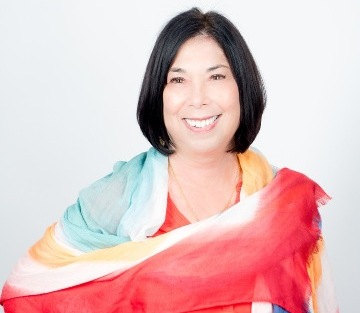Better Guidelines Needed for Clinicians Administering Cannabis

By Bert Gambini
A recent study led by a University at Buffalo researcher suggests a paradigm shift in patient attitudes regarding perceptions of cannabis and prescription opioid use for pain management associated with cancer treatment.
The findings, published in a special issue of the Journal of the National Cancer Institute Monographs, have important implications for developing clinical guidelines for managing symptoms related to a cancer diagnosis, according to Rebecca Ashare, PhD, an associate professor of psychology in UB College of Arts and Sciences, and the study’s lead author.
“Clinical guidelines surrounding cannabis use for patients with cancer have not caught up with what patients are actually doing,” says Ashare, who was a faculty member at the University of Pennsylvania when the research was conducted. “We don’t have a lot of evidence-based work that suggests how to use cannabis; what to use it for; when to use it; what kinds of products for what indications; and what possible interactions with other drugs might be.”
Twelve NCI-designated comprehensive cancer centers conducted surveys with questions on cannabis use during treatment. Ashare’s study investigated whether perceptions of cannabis and opioid use, their co-use, and substitution to manage pain differed by race and ethnicity. Study data suggests that, compared with white patients, Black patients were less likely to report ever using opioids. Among those with prior opioid use, Black patients were also more likely to report that cannabis was more effective at managing pain. Patients who identified as Hispanic or non-white were more likely to substitute cannabis for opioids to manage pain. When controlling for sociodemographic variables, like education and income, Black patients still had 30% lower odds of ever having used opioids, and a nearly twofold increase in odds of reporting that cannabis was more efficient than opioids. These findings align with previous evidence of racial and ethnic disparities in effective pain management. In terms of cannabis use across the 1,220 participants in Ashare’s study, 43% said they used cannabis instead of opioids.
“One of the other papers in this issue did a survey of health care providers on the perceived risks and benefits of cannabis, and most of them said it was safe and had benefits,” says Ashare, who is also affiliated with the Center for Cannabis and Cannabinoid Research in UB’s School of Public Health and Health Professions. “But only 39% of those providers reported feeling comfortable giving guidance on cannabis use, and even fewer felt knowledgeable about cannabis use during cancer treatment. There seems to be a big difference between what patients are doing and how providers can help those patients make decisions,” says Ashare.
Meanwhile, disclosure of cannabis use to a provider is problematic, especially where co-use with opioids is concerned, since some health care systems screen patients with opioid prescriptions for other drugs. Patients testing positive for cannabis use can have their opioid prescription revoked. This leads to patients who might be affected by those rules to withhold information from providers, complicating care and creating additional problems related to interactions with other drugs.
Bert Gambini is a News Content Manager at University at Buffalo.











